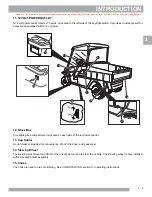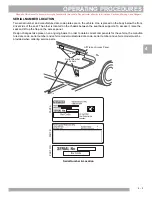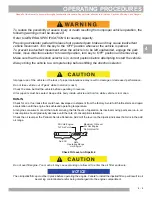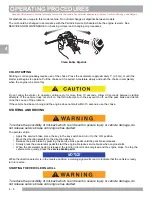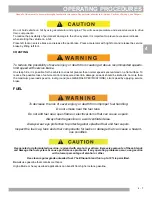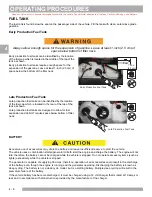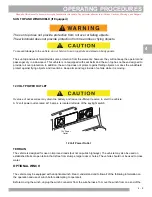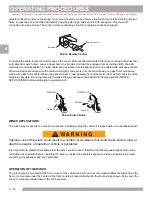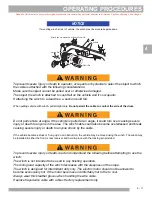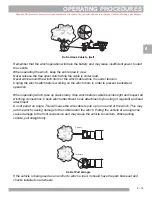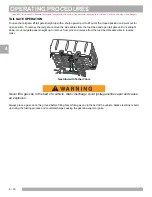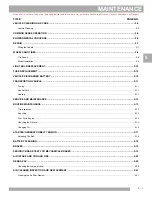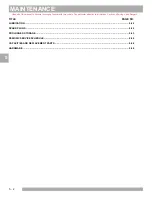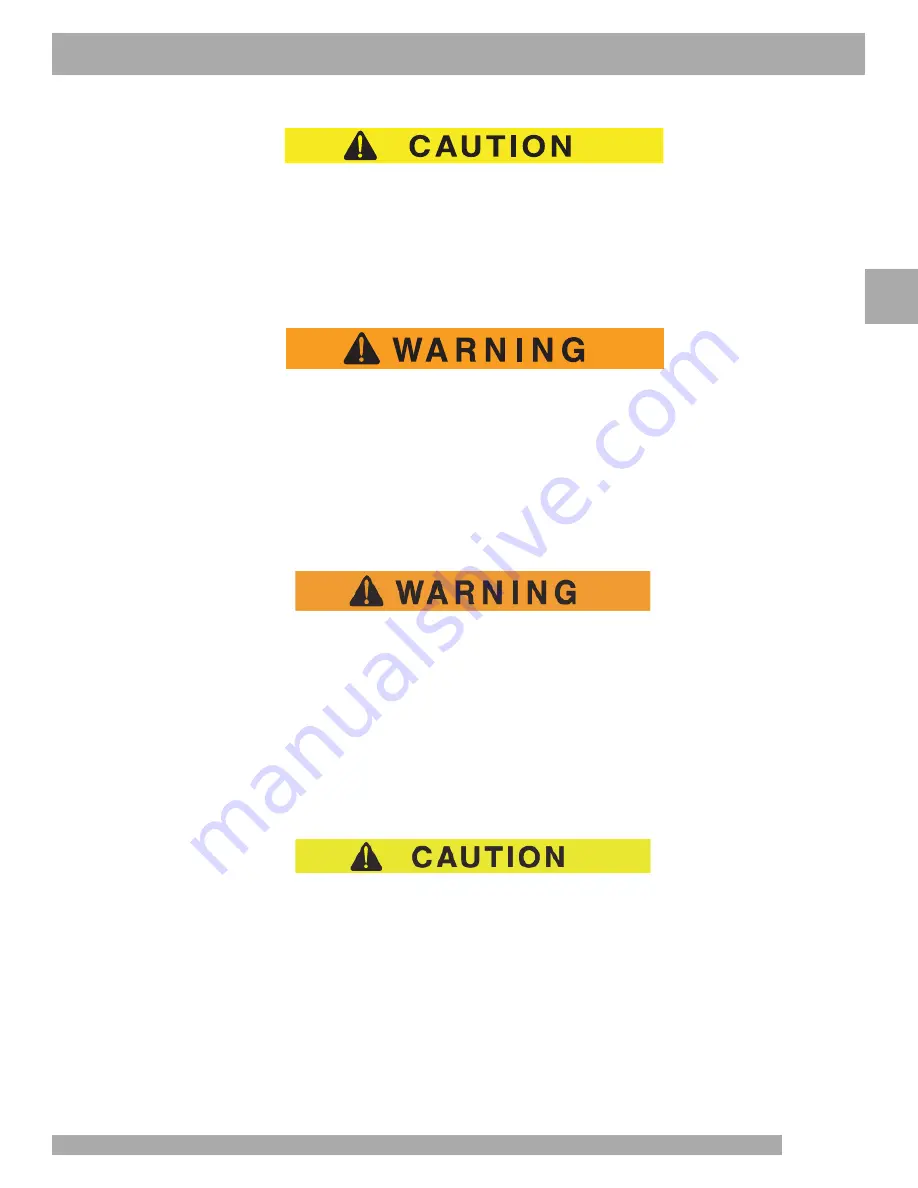
4 - 7
OPERATING PROCEDURES
Read all of this manual to become thoroughly familiar with this vehicle. Pay particular attention to all Notices, Cautions, Warnings, and Dangers.
4
Do not hold vehicle on hill by using accelerator and engine. This will cause premature and excessive wear to drive
train components.
To reduce the possibility of permanent damage to the drive system, it is important to prevent excessive roll-back
when starting the vehicle on a hill.
Place left foot on service brake and release the park brake. Press accelerator with right foot and release the service
brake by lifting left foot.
COASTING
To reduce the possibility of severe injury or death from coasting at above recommended speeds,
limit speed with service brake.
On steep hills, it is possible for the vehicle to coast at greater than normal speeds encountered on a flat surface. To
reduce the possible loss of vehicle control and severe drivetrain damage, speeds should be limited to no more than
the maximum governed speed on level ground (see GENERAL SPECIFICATIONS). Limit speed by applying service
brake.
FUEL
To decrease the risk
of severe injury or death from improper fuel handling:
Do not smoke near the fuel tank.
Do not add fuel near open flame or electrical items that can cause a spark.
Always handle gasoline in a well ventilated area.
Always wear eye protection to protect against splashed fuel and fuel vapors.
Inspect the fuel cap, tank and other components for leaks or damage that can cause a hazard-
ous condition.
Oxygenated or reformulated gasoline, is mixed with alcohols or ethers. Excessive amounts of these blends
can damage the fuel system or cause performance problems. If any operating problems occur, use gasoline
with a lower percentage of alcohol or ether.
Use clean regular grade unleaded fuel. The Ethanol blend fuel up to 10% is permitted.
Do not
use gasoline that contains methanol.
High altitude or heavy use/load applications can benefit from higher octane gasoline.





